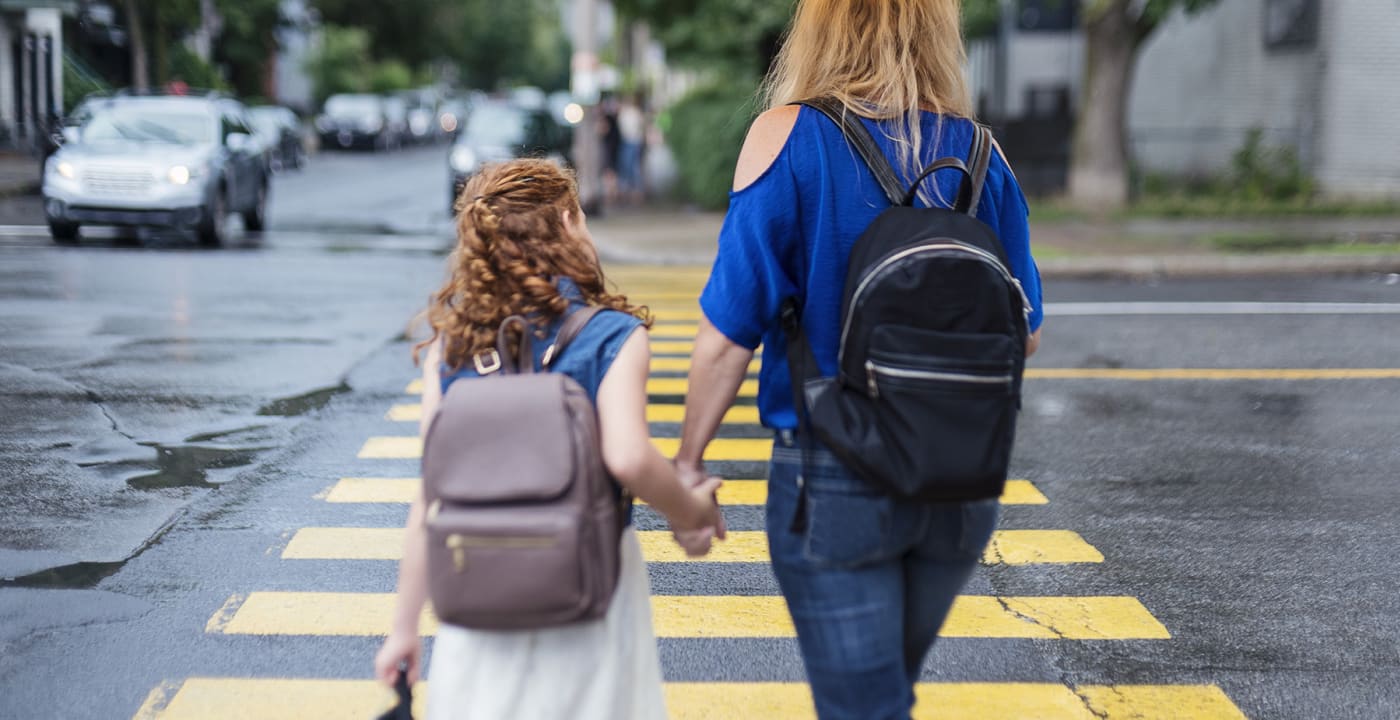8 ways to be safe while walking to school

School’s back in session, so remember to stop for yellow school buses — and look out for children walking to school and crossing the street.
Parents can teach their children to look both ways, but there are a few more tips to keep in mind, especially as the weather gets wetter and darker this fall.
We talked to Erin Summa at the Mary Bridge Center for Childhood Safety and Steven Lobdell, Assistant Director of Safety & Security for Tacoma Public Schools, for some quick tips on walking to school safely.
1. Look both ways and use crosswalks — but don’t assume you’re seen
Teach kids at an early age to look left, right and left again before crossing the street. Then remind them to continue looking until safely across.
If kids cross roads with more than one lane, remind them that just because one car stops doesn’t mean cars in other lanes will, too.
Always use traffic signals and crosswalks if available — but don’t treat them like force fields. Remember drivers are humans, too, which means they won’t always see crosswalks or people walking in them.
The same goes for school zones. There’s a false sense that these are safe areas, but parents and children are rushing around and not always paying close attention to the road.
2. Make eye contact with the driver
Even if the child has the right of way, teach them to make eye contact with the driver so both parties are aware of each other.
3. Eyes up, phones down
Be attentive when walking to avoid tripping, or worse, walking into traffic. Teach kids to put phones, headphones and devices down when crossing the street. It’s particularly important to reinforce this message with teenagers. Being distracted by technology while walking is becoming one of the major causes of pedestrian accidents.
4. Walk in a group
This provides safety in two ways: a group of students may be more visible to a driver than a single student and it provides personal safety from someone who may wish to do harm to a student.
5. Walk on sidewalks or paths
It’s always best to walk on sidewalks or paths and cross at street corners, using traffic signals and crosswalks. If there are no sidewalks, walk facing traffic as far to the left as possible.
6. Cross with an adult
Children under 10 should cross the street with an adult. Every child is different, but developmentally, most kids are unable to judge the speed and distance of oncoming cars until age 10.
7. Be a good role model
Set a good example by putting your phone, headphones and devices down when walking around cars.
Encourage kids to be especially alert for cars that are turning or backing up. Teach them to look for turn signals or back up lights.
Teach kids it is unsafe to run out in the street between parked cars or run across the street not using the crosswalk.
8. Be visible
Students should have some form of clothing, backpack or other item that is reflective, or some form of light to shine as they walk. Dark clothing is a major factor when it comes to pedestrian versus vehicle accidents.



